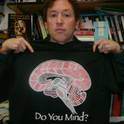The 3 major symptoms of autistic spectrum disorders include 1) social behavioral alterations, 2) problems in communication and 3) higher-order motoric deficits of perseveration and stereotyped movements. Previous work has shown that early developmental exposure to polychlorinated biphenyls (PCBs) alters rat pup social motivation and juvenile rat social recognition/investigation. The present work extends this previous research by examining how perinatal PCB exposure alters motoric functions and communication abilities at different stages of development. Action perseveration was examined using performance measures from a T-maze environment. Communication abilities were evaluated by monitoring ultrasound emission in rat pups during a brief isolation from the litter. T-maze learning and performance were significantly impaired in PCB exposed animals. Additionally, PCB exposure led to reduced ultrasound emission rates during brief isolation from the natal group. When combined with the previous work using the same developmental exposure regimen, it seems clear that PCB exposure at moderate doses can lead to alterations in 1) social behavior, 2) action choice and perseveration, and 3) communication abilities making it a potential candidate as an endocrine disruptor involved in the production of autistic spectrum disorder in the human population.
- Emotion,
- Autism,
- Hormones,
- Toxins
Available at: http://works.bepress.com/howard_casey_cromwell/8/
